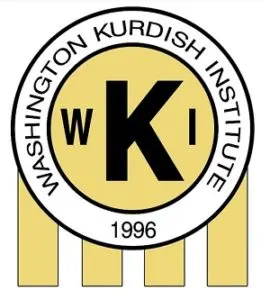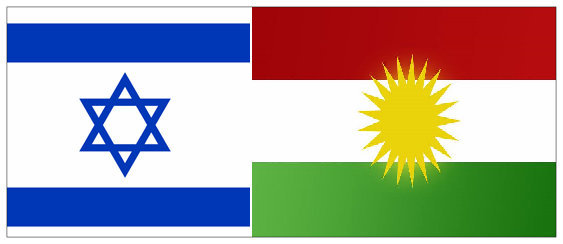Washington Kurdish Institute
By: Mark Cancian and Matthew Cancian
August 3, 2017
At first glance, the two independence movements would seem to have little in common. One was the product of European intellectuals, the other of the hardy mountain people; one was primarily Jewish, the other primarily Muslim. But in fact, the two movements have strong similarities. They both represent long struggles for ethnic self-government, both grew out of hardship and genocide, both struggled to gain acceptance by the major powers, both faced military opposition by their neighbors, both built shadow armies and government structures before independence, both had challenges to building internal unity and both faced opposition by peoples displaced in the setting the new state’s boundaries. The difference, of course, is that the Jews have the State of Israel and the Kurds are still citizens of other countries. With the Kurdish referendum for independence taking place on September 25, we should consider the similarities between the quests of these two peoples for their own country in order to see if any lessons can be learned.
Long struggles for self-government
After the Kingdom of Israel was destroyed during the Jewish-Roman war of A.D. 67-70 and the Bar Kokhba uprising of A.D. 132-136, the great Jewish Diaspora began. Jews spread throughout the Middle East and Europe, trying to be good citizens of their new countries but living separately and maintaining their cultural identity. Every year at Passover the Jews pledged: “next year in Jerusalem”. Zionism was in many ways a natural response to nationalism, the reigning European ideology in the late 19th century. Still, it was 50 years from the first Zionist Congress in 1897 to independence.
The Kurds, after centuries of incorporation into the empires of others, have also experienced a revival. Coming slightly later than the Zionist movement, the recent struggle for Kurdish independence began after the secret Sykes-Picot agreement of 1916. This treaty between the British and French divided Western Asia into zones of influence with little consideration of the local people. The forcing of the Kurdish people into newly invented states began a history of oppression that revived a sense of Kurdish nationalism, commemorated in annual rituals like Nawroz, similar to the Jewish Passover.
Hardship and genocide
During the 1800 years between the end of the Kingdom of Israel and the creation of the State of Israel the Jews had good times and bad in their adopted countries. There were periods of prosperity, punctuated by pogroms and restrictions. Spain, for example, expelled the Jews in 1492. This status might have been endured except for the Holocaust of World War II. As is well-known, six million Jews died. Further, the European–wide anti-Semitism that created and sustained this terrible genocide convinced many Jews that they could never be safe without their own homeland.
The history of Kurdish hardship is, unfortunately, similarly tragic. Division of the Kurdish people among several states created opportunities for predatory governments to abuse the Kurdish people. Critical elements of Kurdish culture were suppressed; they were even prevented from speaking their own language for long periods of time. These efforts were not limited to culture, however. The Kurdish people were also displaced from areas like Kirkuk where Arab regimes in Baghdad wished to consolidate their power. In response to Kurdish attempts to assert their unique identity, the Saddam Hussein regime initiated the Anfal campaign between 1986 and 1989 in which, according to Human Rights Watch, between 50,000 and 100,000 Kurds were killed: about 4,500 villages were cleared and over a million Kurds were displaced. As the Jews had experienced when the Nazis began their oppressions, the international community was slow to act, regarding the attacks as a regrettable, but internal, domestic issue. Further, just as the Nazis used chemical weapons against the Jews of Europe, Saddam Hussein used chemical weapons against Kurds in Halabja and elsewhere.
Acceptance by the major powers
Although the great powers provided aid to the displaced Jews of Europe after the sufferings of the war, they were ambivalent about a Jewish state. Great Britain tended to side with the Arabs, not wanting to alienate its many Arab allies. The United States was not deeply engaged in the Middle East, and the Arab-ists in the State Department did not want to undermine relations with Arab states. Ironically, the Jews received some support from the Soviet Union, which desired to proclaim its anti-colonialist credentials by supporting national liberation movements and thereby undermining the British Empire. This struggle came to a climax during the dramatic United Nations vote on the partition of Palestine, November 29, 1947. The result was uncertain until the very end. The final vote: 33 for, 13 against, 10 abstentions, with Britain abstaining and the US and Soviet Union supporting.
The Kurds have had similar difficulties. The great powers have provided humanitarian aid at key moments, such as in 1991 with Operation Provide Comfort and with protection in 1996 with the no-fly zones. However, political support has been guarded. The great powers have wanted to maintain a unified Iraq and not alienate Turkey and Iran, both of which have strongly opposed Kurdish nationhood because of the potential threat to their own sovereignty. Unlike its (weak) support for the establishment of Isreal in 1948, the United States has continued its ambivalent attitude towards an independent Kurdistan, which many US officials see as an abandonment of the Iraqi unity that the United States has sought since the 2003 invasion.
Shadow armies and government structures
Before independence, the Jews in Palestine built a shadow army and government in order to be ready for independence when it came. The army, called the Hagannah, began in the 1920s as a Jewish militia. During conflicts with local Arabs in the 1920s and 1930s this force evolved from a clandestine paramilitary organization to a local defense force and, in the 1940s as independence approached, into a regular Army. By the time independence was declared in 1948, it consisted of 12 brigades and a supporting infrastructure for training and supply and was a national army in all but name. Two weeks after independence, it officially became the Israel Defense Force.
At the same time the Jews built a shadow government in the form of the Jewish Agency, which had departments for immigration, education, security and diplomacy. The Jewish Agency acted on behalf of the Jews of Palestine and became their representative to the British government. When the State of Israel was declared on May 14, 1947, the Jewish Agency became the government of the State of Israel. The head of the Jewish agency, David Ben-Gurion, became the first prime minister of Israel.
The Kurds also assiduously built up a secret army and government through the century: after the de facto independence gained in 1991, however, they have had many struggles in adopting informal institutions into formal bureaucratic structures. The Peshmerga, once mountain guerilla fighters, are now a regular military force with large units, heavy weapons, and a supporting infrastructure. The Kurdish regional government in Iraq has far more functions than a usual province administration would have, for example, its own diplomatic corps in all but name. As with the Jews in Israel, these structures will be essential for a smooth transition if Kurdistan seeks de jure international recognition.
Military opposition by neighbors
When Israel was established, all four of its neighbors — Egypt, Jordan, Syria, and Lebanon – declared war and invaded. A two-year struggle ensued, but the Israelis prevailed, and in 1949 an armistice was signed. The Arab states were emphatic that this was an armistice, not a peace treaty, so military confrontations continued for 30 years and three more wars (1956, 1967, 1973). State conflict ended only with the Camp David Accords of 1978. Even so, Israel suffers attacks by non-state actors like Hezbollah and Hamas.
The Kurdish struggle in the 20th century has been punctuated by periods of higher and lower military struggles against other powers who sought to crush the Kurdish identity. Like the pre-independence Jewish militias, the Kurdish Peshmerga have struggled against great odds to protect their people. Assuming that the September referendum passes, the Iraqi Kurds will have to engage in lengthy negotiations with Baghdad about independence: we can only hope that these allow Kurdistan to avoid Israel’s post-independence experience of invasion and continuous conflict.
Challenges to building internal unity
Although the Jewish Agency, and the later Israeli government, was able to bring most political groups into the body politic, there were some groups, like the Irgun, that pursued their own military and political objectives. On occasion these groups had to be suppressed, resulting in some violence and internal disunity. However, Israel was able to avoid a civil war and resolve most dissent through democratic processes.
The Kurds also faced challenges to national unity, having been divided for many years between the KDP and PUK, and, recently, Gorran. All these factions will need to work together without violence for a future state to be viable. The inability of Kurdish factions to agree on how to execute their constitution has many Western friends of Kurdistan very worried: the case of South Sudan is the nightmare. Established through the intervention of western states and human rights activists, South Sudan began with great hopes but has descended into war and chaos. If all of Kurdistan’s political groups can make compromises and present a unified face to the outside world, like the Israelis eventually did, it will greatly help their cause in achieving independence.
Opposition by displaced peoples
Inevitably, there are outsiders within the borders of the new state. When the state of Israel was established, many local Arabs fled, some voluntarily expecting the new Jewish state to be destroyed quickly, others being forced out by Jewish officials and military forces. The resulting displacement of Palestinians continues to the present day and remains a source of tension and conflict. In some quarters the opposition is so bitter that it threatens to de-legitimize Israel as a nation.
So it is with the Kurds, who have many Arabs and others within the boundaries of their province and military front lines. So far Kurdistan has been very welcoming of minorities and has worked to promote a holistic ‘Kurdistani’ identity in place of an ethnocentric ‘Kurdish’ identity. The massive influx of refugees and Internally Displaced Persons since 2014, however, has severely strained government resources while bringing in many people who might not want to be ‘Kurdistani’ but who are not able to return home due to conflicts outside Kurdistan. The Kurds will need to settle the inevitable disputes with displaced persons in a way that does not devolve into decades of conflict.
The Kurdish-Israeli analogy is not perfect, of course. The Kurds are already in their Promised Land but don’t have the advantage of the fluid boundaries of a post-colonial era. Israel had much stronger ties to the great powers through the Jewish diaspora. Nevertheless, the many parallels are striking. One hopes that history will work out as well for the Kurds as it has for the Israelis.
Updated 11:03am
Disclaimer: The views, opinions, and positions expressed by authors and contributers do not necessary reflect those of the WKI.

